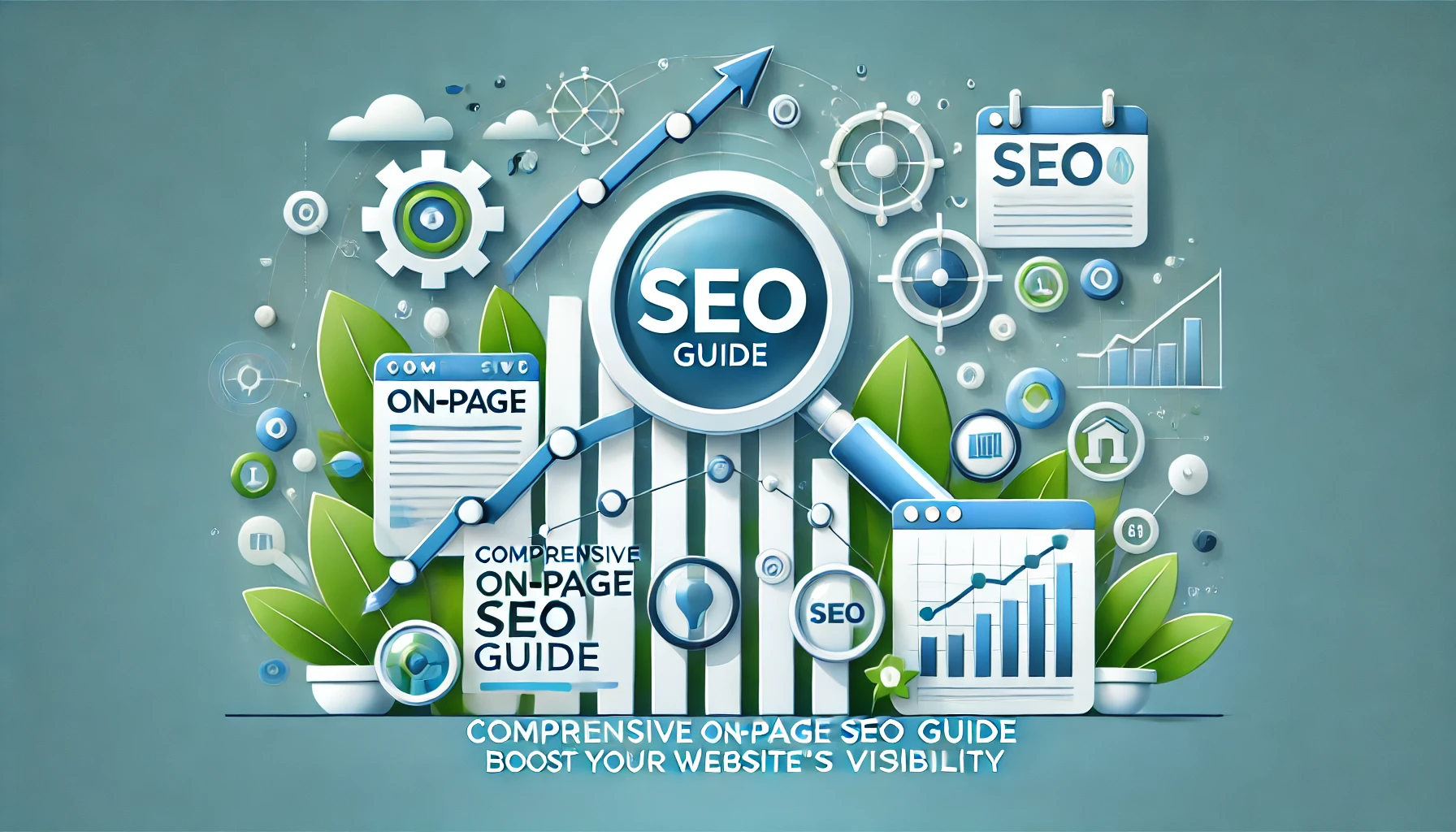Comprehensive On-Page SEO Guide: Boost Your Website's Visibility
 TDigitalGuru
TDigitalGuru 
In the ever-evolving world of digital marketing, on-page SEO remains a critical factor for driving organic traffic to your website. This guide will walk you through the essential elements of on-page SEO, offering actionable insights to help you optimize your website effectively.
What is On-Page SEO?
On-page SEO refers to the practice of optimizing individual web pages to rank higher in search engines and earn more relevant traffic. It involves both the content and HTML source code of a page, making it a crucial aspect of any SEO strategy. Key factors include content quality, keyword optimization, meta tags, internal linking, and user experience.
1. Craft High-Quality Content
Content is king! Search engines prioritize valuable, relevant, and unique content that addresses users' needs. Here are some tips:
Research Your Audience: Understand what your target audience is searching for. Use tools like Google Trends and keyword planners to identify popular topics.
Provide Value: Your content should offer solutions to problems or answers to questions. Aim for comprehensive articles that delve deep into a topic.
Keep It Engaging: Use a conversational tone, short paragraphs, and bullet points to enhance readability. Incorporate visuals, such as images or infographics, to break up text and engage users.
2. Keyword Optimization
Keywords are the backbone of SEO. Effective keyword optimization helps search engines understand the context of your content. Here’s how to do it:
Keyword Research: Use tools like Ahrefs or SEMrush to find relevant keywords with good search volume and low competition.
Placement: Incorporate your primary keyword in the title, headings, and throughout the content, but avoid keyword stuffing. Aim for a natural flow.
Long-Tail Keywords: Consider using long-tail keywords (phrases with three or more words) to target specific queries. These often have lower competition and higher conversion rates.
3. Optimize Meta Tags
Meta tags are snippets of text that describe a page’s content. They play a vital role in SEO and user experience:
Title Tags: This is the first thing users see in search results. Make it compelling, include your primary keyword, and keep it under 60 characters.
Meta Descriptions: Write a brief summary (150-160 characters) that entices users to click. Although they don’t directly impact rankings, a well-crafted meta description can improve your click-through rate.
4. Improve URL Structure
A clean URL structure not only enhances user experience but also helps search engines understand your content:
Descriptive URLs: Use short, descriptive URLs that include your primary keyword. For example, instead of
www.example.com/post123, usewww.example.com/on-page-seo-guide.Hyphens for Separation: Use hyphens (-) to separate words in your URLs. This makes them easier to read for both users and search engines.
5. Internal Linking
Internal linking involves linking to other pages on your website, which can improve SEO and user navigation:
Contextual Links: When mentioning relevant topics, link to other pages on your site. This helps search engines crawl your site and establishes a hierarchy of information.
Anchor Text: Use descriptive anchor text that provides context to the linked content. Avoid generic phrases like “click here.”
6. Optimize Images
Images enhance the visual appeal of your content, but they can also impact your SEO:
File Names: Use descriptive file names that include keywords. Instead of
image1.jpg, useon-page-seo-guide.jpg.Alt Text: Add alt text to describe your images. This not only improves accessibility but also helps search engines understand what the image is about.
7. Enhance User Experience
User experience (UX) is a significant ranking factor. A well-optimized website keeps visitors engaged and reduces bounce rates:
Responsive Design: Ensure your website is mobile-friendly. With mobile search on the rise, a responsive design is crucial for providing a seamless experience across devices.
Page Speed: Optimize your site’s loading time. Use tools like Google PageSpeed Insights to identify areas for improvement. A fast-loading site improves user satisfaction and can positively impact rankings.
Clear Navigation: Make it easy for users to find information. Use clear menus and a logical page structure to enhance usability.
8. Monitor and Update
SEO is not a one-time task; it requires continuous monitoring and updates:
Analytics Tools: Use Google Analytics and Google Search Console to track your site’s performance. Monitor metrics like traffic, bounce rates, and keyword rankings.
Regular Updates: Keep your content fresh and relevant by updating older posts and adding new information as trends evolve.
Conclusion
On-page SEO is an essential component of your digital marketing strategy. By focusing on high-quality content, keyword optimization, and user experience, you can enhance your website's visibility and attract more organic traffic. Remember, SEO is an ongoing process; stay informed about the latest trends and be willing to adapt your strategy. Implement these techniques today, and watch your website climb the search engine rankings!
Bonus Backlink List -
Subscribe to my newsletter
Read articles from TDigitalGuru directly inside your inbox. Subscribe to the newsletter, and don't miss out.
Written by
